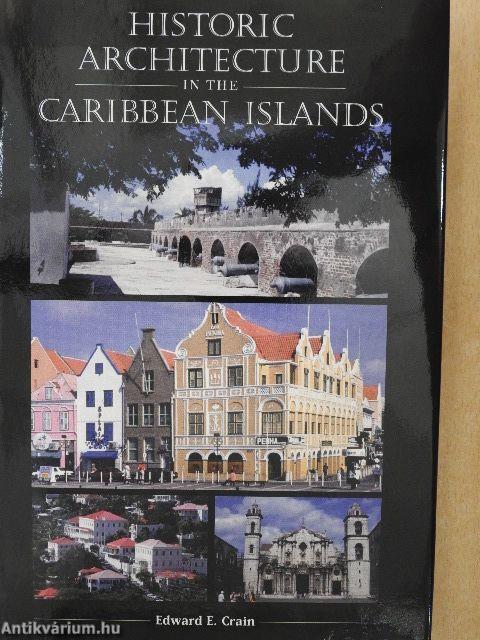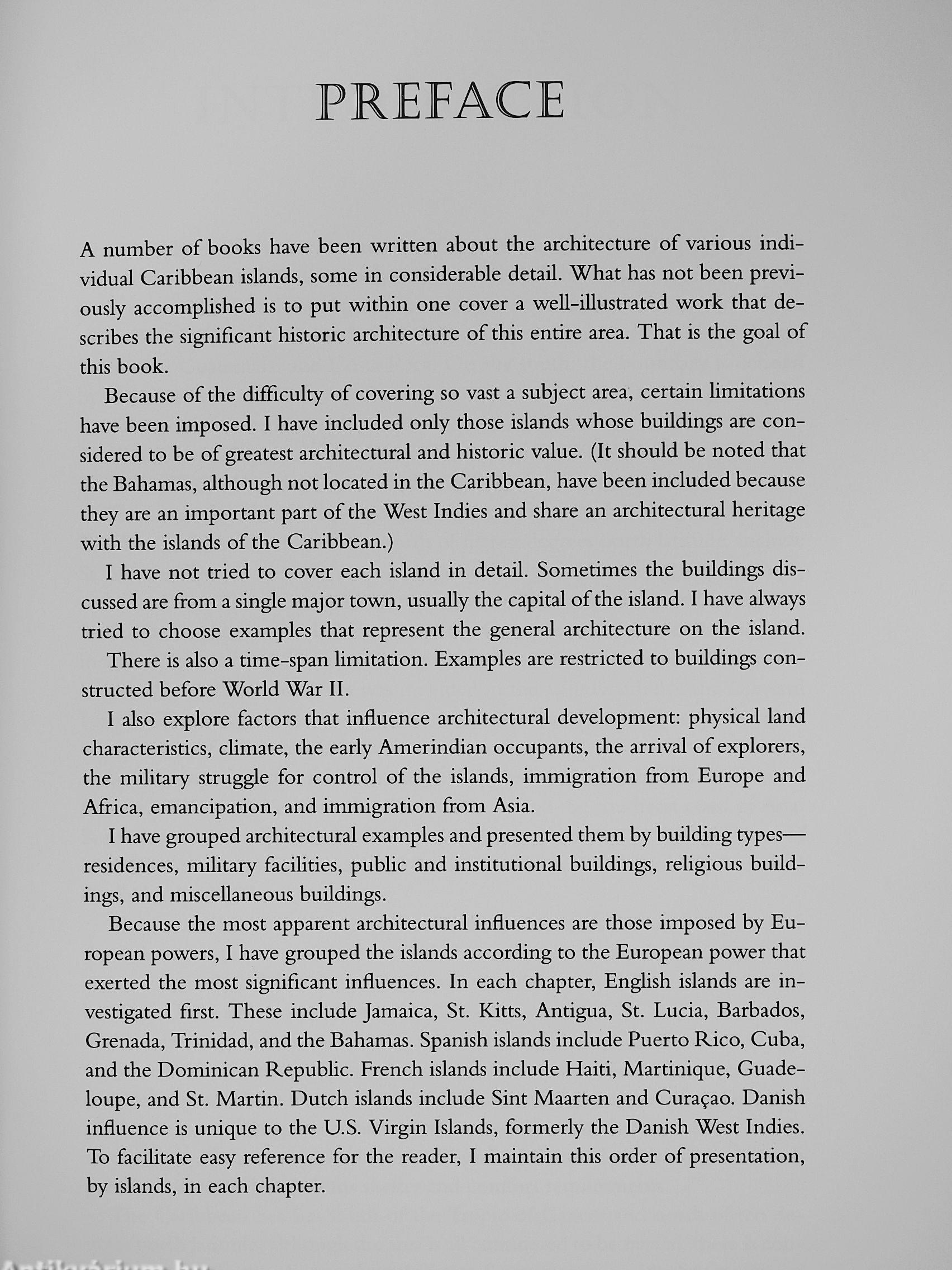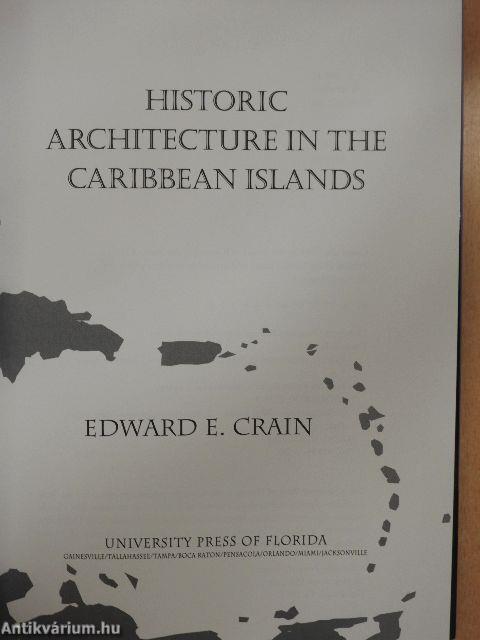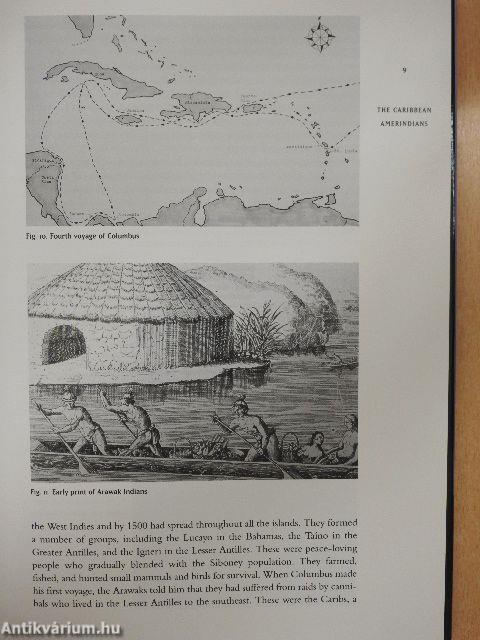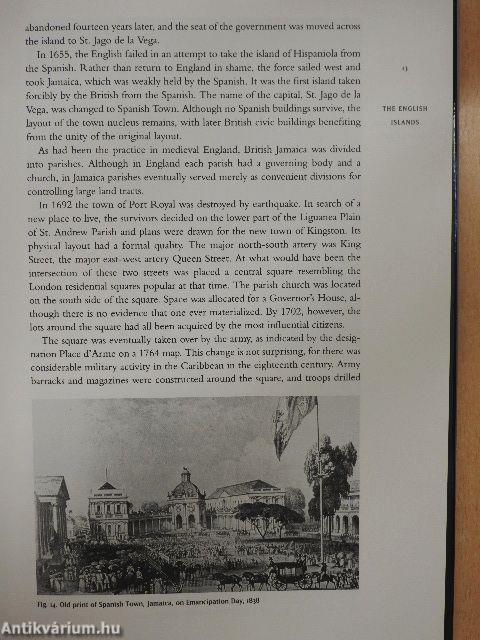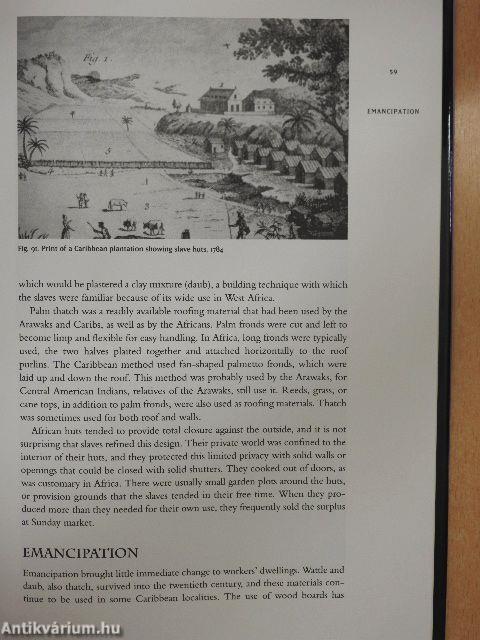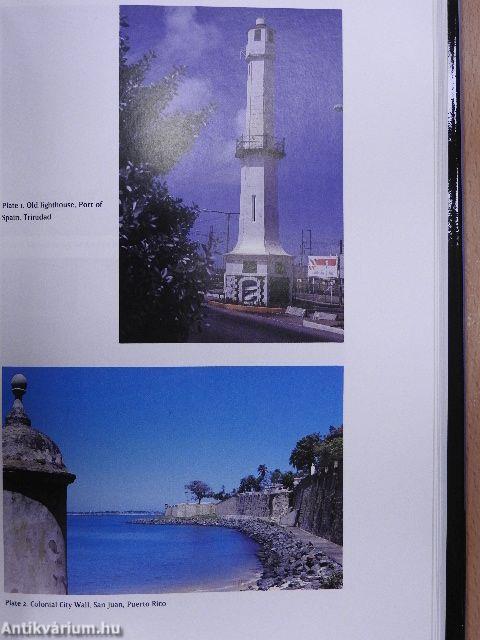1.067.053
kiadvánnyal nyújtjuk Magyarország legnagyobb antikvár könyv-kínálatát

VISSZA
A TETEJÉRE
JAVASLATOKÉszre-
vételek
Historic Architecture in the Caribbean Islands
| Kiadó: | University Press of Florida |
|---|---|
| Kiadás helye: | Gainesville |
| Kiadás éve: | |
| Kötés típusa: | Vászon |
| Oldalszám: | 256 oldal |
| Sorozatcím: | |
| Kötetszám: | |
| Nyelv: | Angol |
| Méret: | 26 cm x 18 cm |
| ISBN: | 0-8130-1293-7 |
| Megjegyzés: | Fekete-fehér és színes fotókkal, illusztrációkkal, térképekkel. |
naponta értesítjük a beérkező friss
kiadványokról
naponta értesítjük a beérkező friss
kiadványokról
Előszó
TovábbFülszöveg
Fl or those who are explorers and f are curious to know more about the culture of the Caribbean, Historic Architecture in the Caribbean Islands is a useful guide to the significant structures on each island."
—Thomas S. Marvel, architect. Puerto Rico
TT comprehensive, panoramic vision /—% of architecture in this important . jL geographic region."
—Efrain E. Perez-Chanis, architect and former dean, School of Architecture, University of Puerto Rico
Historic Architecture in the Caribbean Islands
EDWARD E. GRAIN
" Rii
» ¦
In this abundantly illustrated book, Edward Grain records the rich architectural heritage of the sixteen Caribbean islands. Hundreds of black-and-white and color photographs, most taken by the author, show in detail structures with arresting visual appeal and lasting historic value.
Grain explores the physical, cultural, and political factors that influenced design evolution in the region, including climate, geography, the cultures of early occupants,... Tovább
Fülszöveg
Fl or those who are explorers and f are curious to know more about the culture of the Caribbean, Historic Architecture in the Caribbean Islands is a useful guide to the significant structures on each island."
—Thomas S. Marvel, architect. Puerto Rico
TT comprehensive, panoramic vision /—% of architecture in this important . jL geographic region."
—Efrain E. Perez-Chanis, architect and former dean, School of Architecture, University of Puerto Rico
Historic Architecture in the Caribbean Islands
EDWARD E. GRAIN
" Rii
» ¦
In this abundantly illustrated book, Edward Grain records the rich architectural heritage of the sixteen Caribbean islands. Hundreds of black-and-white and color photographs, most taken by the author, show in detail structures with arresting visual appeal and lasting historic value.
Grain explores the physical, cultural, and political factors that influenced design evolution in the region, including climate, geography, the cultures of early occupants, colonial exploration, military control, immigration, and slavery. He observes that colonial influence dominated architectural development and concludes that designs fiom the mother countries (Spain, England, France, Denmark, and the Netherlands), while often elegant or deUghtfiil, were just as often inappropriate for the tropics.
The Schoelcher Museum in Guadeloupe, for example, embodies the values of French classicism; the Catholic church in Kingston, Jamaica, recalls the Byzantine revival style; the Fox Delicias Theater in Ponce, Puerto Rico, is an example of Art Deco design. Urban design in the Spanish colonies reflects the dictates of the Law of the Indies, which mandated a grid pattern for aU streets (even those through hilly terrain) and a central plaza in each town. With its gabled, red-tiled roo6, the capital of Curacao—named Willemstad for Dutch
(continued from front flap)
King Willem—^is nicknamed "Amsterdam in Miniature."
"Architecture succeeded when nostalgia was replaced by logic, when a recognition of tropical demands was reflected in the buildings," Grain writes. When designers realized that the basic fimction of a Garibbean structure was to offer protection from rain and sun, they introduced such elements as verandas, porches, fretwork, and louvered shutters.
Following architectural development from the time of early Amerindian habitation of the islands up to World War II, Grain groups buildings by type: large and small residences, mihtary faciUties, pubHc and institutional structures, and places of worship. Vissza
Témakörök
- Idegennyelv > Idegennyelvű könyvek > Angol > Művészetek > Építészet
- Idegennyelv > Idegennyelvű könyvek > Angol > Művészetek > Művészettörténet, általános
- Művészetek > Művészettörténet általános > Kontinensek művészete > Amerika
- Művészetek > Művészettörténet általános > Idegen nyelv > Angol
- Művészetek > Művészettörténet általános > Művészettörténet > Külföldi
- Művészetek > Építészet > Kontinensek szerint > Amerika > Latin-Amerika
- Művészetek > Építészet > Idegen nyelv > Angol
- Művészetek > Építészet > Műemlékek > Egyéb
- Művészetek > Építészet > Építészettörténet > Külföldi



